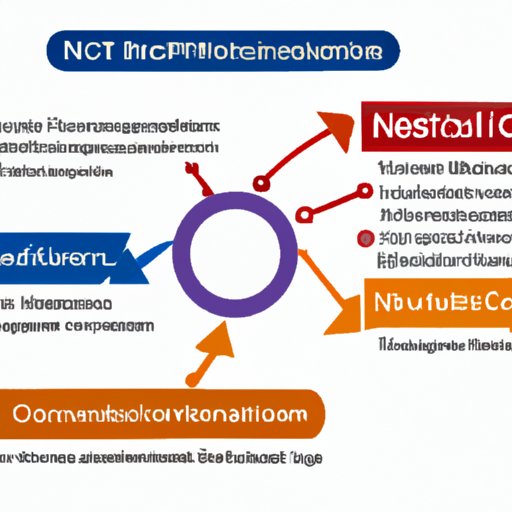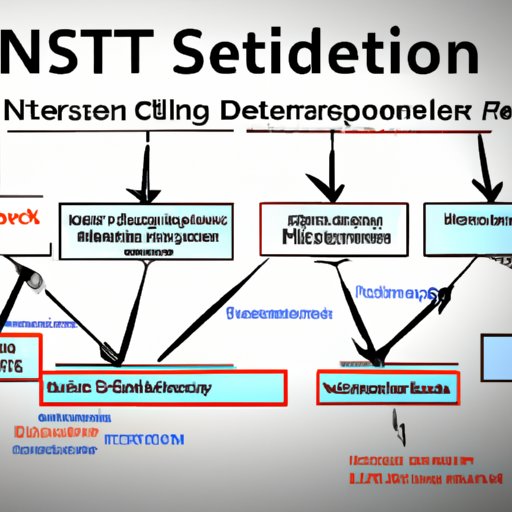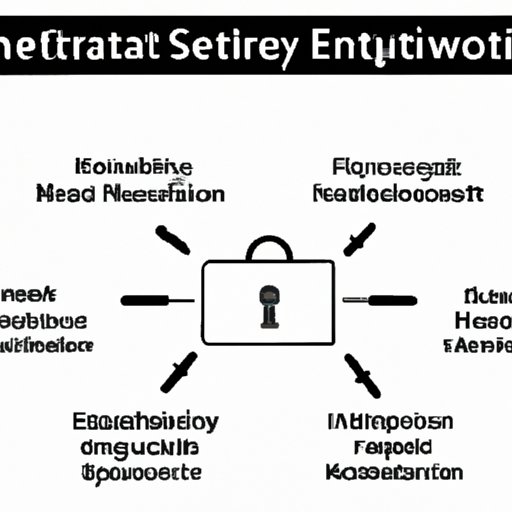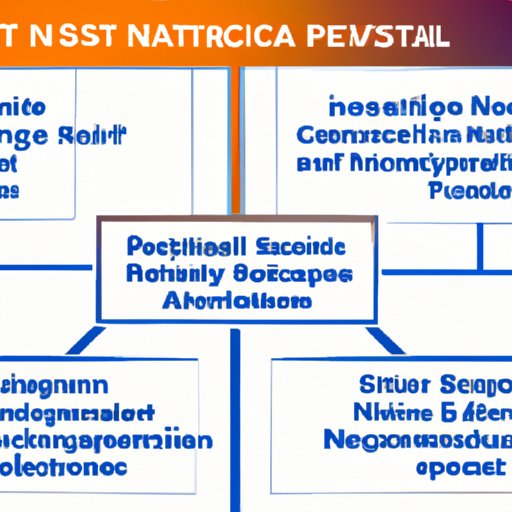Introduction
The National Institute of Standards and Technology (NIST) Cybersecurity Framework (CSF) is a set of standards for organizations to use when assessing and improving their cyber security posture. It provides a comprehensive approach to managing cyber risks by helping organizations identify, protect, detect, respond to, and recover from cyber threats. The framework is designed to be flexible and customizable, allowing organizations of different sizes and industries to tailor it to their needs.
The benefits of implementing the NIST CSF include improved security awareness, reduced risk of cyber attacks, and compliance with applicable regulations. Additionally, it can help organizations save money by reducing the cost of security incidents, such as data breaches. By following the NIST CSF, organizations can ensure that their cyber security efforts are comprehensive and effective.
This article will explore how to implement the NIST Cybersecurity Framework. It will cover the five core functions of the framework, discuss strategies for effective implementation, provide steps for implementation, discuss resources needed for implementation, and outline potential challenges. Examples of successful implementations of the NIST CSF will also be included.

Identifying the Five Core Functions of the NIST Cybersecurity Framework
The NIST CSF is composed of five core functions: identify, protect, detect, respond, and recover. These functions provide an effective structure for managing cyber security and are designed to be used together, rather than in isolation. Each function should be tailored to the specific needs of the organization.
Identify
The first step in implementing the NIST CSF is to identify the organization’s assets, threats, vulnerabilities, and risks. This includes understanding the organization’s IT infrastructure, the types of data it stores and processes, and the people who have access to it. Organizations should also take into account external threats, such as malicious actors, natural disasters, and other disruptions.
Protect
Once an organization has identified its assets, threats, and vulnerabilities, it can begin to put measures in place to protect them. This includes establishing policies and procedures for access control, data encryption, and other security measures. It also involves training employees on cybersecurity best practices, such as password management and safe browsing habits.
Detect
Organizations must be able to detect security incidents quickly and accurately. This includes monitoring networks and systems for suspicious activity, deploying intrusion detection systems, and implementing regular vulnerability scans. Additionally, organizations should establish a process for reporting security incidents, such as a breach or unauthorized access.
Respond
When a security incident occurs, organizations must be able to respond quickly and effectively. This includes having a response plan in place that outlines the steps to take in the event of a security incident. It also involves having the necessary personnel and resources available to respond to incidents, as well as having procedures in place for notifying affected parties and communicating with the public.
Recover
The final step in implementing the NIST CSF is to develop a plan for recovering from a security incident. This includes restoring systems and data, as well as addressing any legal or regulatory requirements. Additionally, organizations should review their security measures to determine what changes need to be made to prevent similar incidents from occurring in the future.

Developing an Effective Strategy for Implementing the NIST Cybersecurity Framework
In order to successfully implement the NIST CSF, organizations must develop an effective strategy. This includes defining goals and objectives, identifying risks and vulnerabilities, and establishing policies and procedures. Additionally, organizations should consider investing in security solutions and services, such as firewalls, antivirus software, and managed security services.
Defining Goals and Objectives
Before implementing the NIST CSF, organizations should define their goals and objectives. This includes determining the desired outcomes, such as improved security posture, increased compliance, or reduced risk. Organizations should also consider the costs associated with implementing the framework and the resources needed to do so.
Identifying Risks and Vulnerabilities
Organizations must also identify the risks and vulnerabilities associated with their IT environment. This includes understanding potential threats, such as malware, phishing attacks, and data breaches. Additionally, organizations should assess the security controls they already have in place and identify any gaps that need to be addressed.
Establishing Policies and Procedures
Organizations should also establish policies and procedures for implementing the NIST CSF. This includes developing an incident response plan, creating security awareness programs for employees, and establishing access control policies. Additionally, organizations should consider investing in security solutions and services, such as firewalls, antivirus software, and managed security services.
Steps Involved in Implementing the NIST Cybersecurity Framework
Once an organization has developed a strategy for implementing the NIST CSF, there are several steps involved in the implementation process. These steps include assessing the current security environment, developing a risk management plan, implementing risk mitigation strategies, and monitoring, testing, and validating security controls.
Assess Current Security Environment
The first step in implementing the NIST CSF is to assess the organization’s current security environment. This includes understanding the organization’s IT infrastructure, the types of data it stores and processes, and the people who have access to it. Additionally, organizations should assess the security controls they already have in place and identify any gaps that need to be addressed.
Develop a Risk Management Plan
Once an organization has identified its assets, threats, and vulnerabilities, it can begin to develop a risk management plan. This includes establishing policies and procedures for access control, data encryption, and other security measures. Additionally, organizations should consider investing in security solutions and services, such as firewalls, antivirus software, and managed security services.
Implement Risk Mitigation Strategies
Organizations must also develop strategies for mitigating the risks associated with their IT environment. This includes establishing a process for monitoring and responding to security incidents, training employees on cybersecurity best practices, and implementing security solutions, such as firewalls and antivirus software.
Monitor, Test and Validate Security Controls
Finally, organizations should monitor, test, and validate their security controls on a regular basis. This includes performing vulnerability scans, running penetration tests, and conducting audits. Additionally, organizations should establish a process for reporting security incidents, such as a breach or unauthorized access.

Necessary Resources for Implementing the NIST Cybersecurity Framework
In order to successfully implement the NIST CSF, organizations must have the necessary resources. This includes human resources, financial resources, and technical resources. Additionally, organizations should consider investing in security solutions and services, such as firewalls, antivirus software, and managed security services.
Human Resources
Organizations must have the necessary personnel in place to implement the NIST CSF. This includes having staff members with expertise in cyber security, as well as personnel responsible for developing policies and procedures. Additionally, organizations should ensure that all employees are trained on cybersecurity best practices, such as password management and safe browsing habits.
Financial Resources
Organizations must also have the necessary financial resources to implement the NIST CSF. This includes budgeting for security solutions and services, such as firewalls, antivirus software, and managed security services. Additionally, organizations should consider the costs associated with implementing the framework and the resources needed to do so.
Technical Resources
Finally, organizations must have the necessary technical resources to implement the NIST CSF. This includes having the necessary hardware and software, as well as personnel with expertise in cyber security. Additionally, organizations should consider investing in security solutions and services, such as firewalls, antivirus software, and managed security services.
Challenges of Implementing the NIST Cybersecurity Framework
While the NIST CSF provides a comprehensive approach to managing cyber risks, there are some potential challenges associated with implementation. These include cost, complexity, and the time and resources required. Additionally, organizations must ensure that they have the necessary personnel and resources available to respond to incidents, as well as having procedures in place for notifying affected parties and communicating with the public.
Cost
One of the potential challenges of implementing the NIST CSF is cost. Organizations must budget for security solutions and services, such as firewalls, antivirus software, and managed security services. Additionally, organizations should consider the costs associated with implementing the framework and the resources needed to do so.
Complexity
Another challenge of implementing the NIST CSF is complexity. Organizations must understand the organization’s IT infrastructure, the types of data it stores and processes, and the people who have access to it. Additionally, organizations should assess the security controls they already have in place and identify any gaps that need to be addressed.
Time and Resources
Finally, organizations must have the necessary time and resources to implement the NIST CSF. This includes having the necessary personnel and resources available to respond to incidents, as well as having procedures in place for notifying affected parties and communicating with the public. Additionally, organizations should consider investing in security solutions and services, such as firewalls, antivirus software, and managed security services.
Examples of Successful NIST Cybersecurity Framework Implementation
There are several examples of organizations that have successfully implemented the NIST CSF. These include the United States Department of Homeland Security, Microsoft, and Bank of America.
Example 1
The United States Department of Homeland Security (DHS) is one example of an organization that has successfully implemented the NIST CSF. DHS implemented the framework in 2014 and has since seen significant improvements in its cyber security posture. According to DHS’s Chief Information Officer, “We have achieved measurable success in our efforts to reduce risk, improve security, and increase resiliency.”
Example 2
Microsoft is another example of an organization that has successfully implemented the NIST CSF. Microsoft adopted the framework in 2015 and has since seen improvements in its security posture. According to Microsoft’s Chief Security Officer, “By using the NIST Cybersecurity Framework, we’ve been able to better understand our security posture and make improvements where needed.”
Example 3
Bank of America is yet another example of an organization that has successfully implemented the NIST CSF. Bank of America adopted the framework in 2016 and has since seen significant improvements in its security posture. According to Bank of America’s Chief Security Officer, “We’ve been able to strengthen our security posture and reduce our risk profile by implementing the NIST Cybersecurity Framework.”
Conclusion
The NIST Cybersecurity Framework provides a comprehensive approach to managing cyber risks. By following the framework, organizations can ensure that their cyber security efforts are comprehensive and effective. This article explored how to implement the NIST CSF, including identifying the five core functions, developing an effective strategy, steps involved in implementation, necessary resources, and challenges. Examples of successful implementations of the NIST CSF were also included.
To ensure successful implementation of the NIST CSF, organizations should define their goals and objectives, identify risks and vulnerabilities, and establish policies and procedures. Additionally, organizations should have the necessary personnel and resources available to respond to incidents, as well as having procedures in place for notifying affected parties and communicating with the public.
For more information on implementing the NIST CSF, organizations should consult the NIST Cybersecurity Framework website and read guidance documents from the Department of Homeland Security and other sources.
(Note: Is this article not meeting your expectations? Do you have knowledge or insights to share? Unlock new opportunities and expand your reach by joining our authors team. Click Registration to join us and share your expertise with our readers.)
